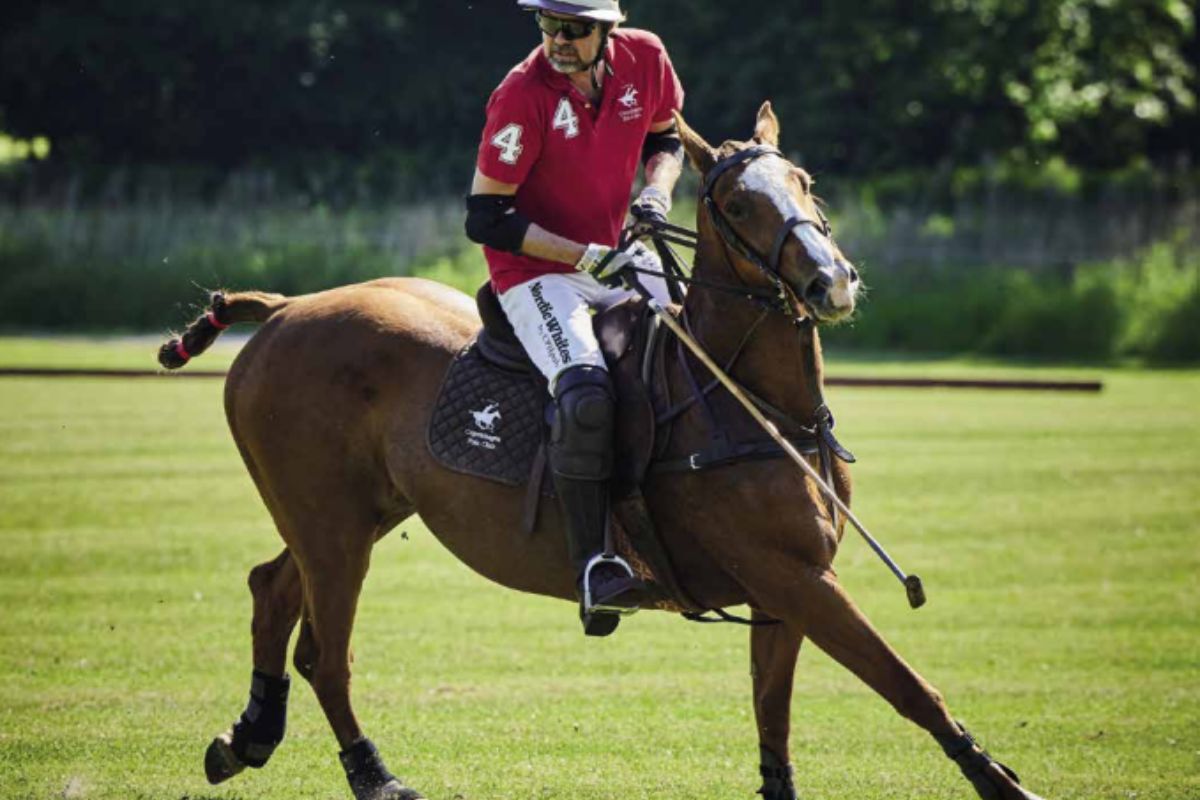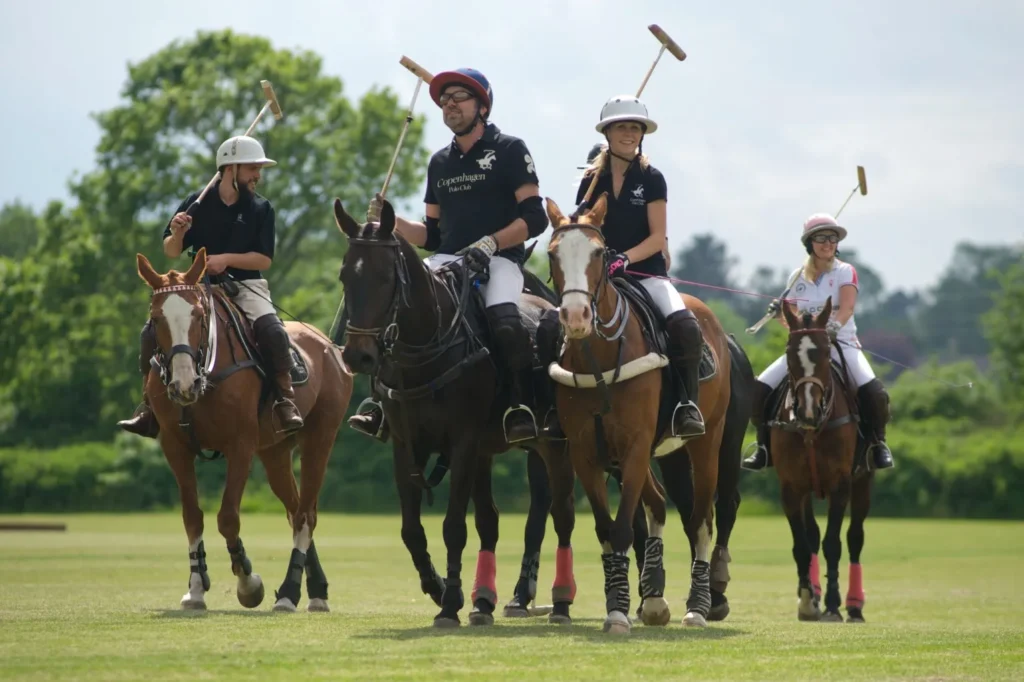Menu

Polo is in many ways an exclusive sport. But it´s so much more than glamour, champagne, and spectators in fine clothes. This sport creates a unity among the players and a special interaction between horse and rider. Denmark may not be a great polo nation – yet. But at Copenhagen Polo Club (CPC) they have set out to change that.
You may also like to read: The Millionaire Daughters in Showjumping
Christian Green is the managing director and co-owner of CPC, Denmark's only polo club. According to him, practicing it requires constant training if you want to experience a positive development in your riding as well as in your turns and not least in the interaction with your teammates. Thus, you cannot necessarily expect it to be something that everybody will take to.
“We want to make it easier for everyone to find out if polo might be the right new hobby. We are experiencing a growing interest in the sport. However, we are also trying to find such kind of a Danish model that will suit our culture," Christian explains.
It is possibly the world's oldest team sport, dating back over 2,000 years to Persia. Originally, the sport is known as some kind of war simulation that could train the cavalry to go to war.
In the 19th century, Anglo-Indian officers brought the game to the rest of the world. To this day polo is practiced in over 90 countries with Argentina at the front with more than 3,000 active players nationwide, more than any other country.
While polo may have an elitist image in i.a. the UK, in Argentina it is a populist sport, with big matches attracting crowds of more than 30,000 people and being broadcast live on television. Since World War II, Argentina has been the leading country in polo, and many Argentines have grown up by playing it. Therefore, they often consider it more of a lifestyle than a definite job. They often travel around the world to work in various polo clubs. For example, help to start the discipline in countries that otherwise do not have much knowledge of it.
So naturally, Argentina is where Copenhagen Polo Club finds its coaches, grooms and future talents in order to build up a strong base for the sport in Denmark.
Left-handed playing was initially banned back in the mid-1930s, for safety reasons. With players often riding head-on towards each other in pursuit of the ball, if a right-handed player approaches a left-handed player, at the tremendous speeds often reached within the sport, a dangerous head-on collision can be a real risk.
You ride according to right of way, which means that the direction always follows the player who rides directly in the direction of the ball or follows it at the smallest angle. That is why polo places high demands on horses and riders in many ways, and precision is crucial for both parties.
For that reason, using the left hand to hold the stick was banned in the mid 1930ies. However, after World War II the ban was lifted for several years, because of low interest in the sport. Despite that, polo was reinstated again in 1974 for the same safety reasons.
While playing with the wrong hand, so to speak, must be challenging for many left-handed. Many who write with their left hand are still able to play polo, rather successfully, using their right.
Prince William is perhaps the most royal left-handed player, and he is not outdone by his younger, right-handed, brother, Harry.
You may also like to read: Poles & Cones - Creating variation in the daily training
With the growing interest in this sport in Denmark, it is important for Christian Green to highlight the sense of community and togetherness That is what they try to create at Copenhagen Polo Club.
“These clubs are often characterized by being a great community. You always enjoy having fun and talking about the match over i.a. an Argentine barbecue with the other players as well as family and friends. It's the same social culture you meet in clubs around the world, and it's very refreshing. Even though the sport often attracts the so-called resourceful people, money and status are not something we talk about. On the field, everyone is equal, and the passion for the sport is the focal point,” he explains.
Polo is a special equestrian sport in the sense, that there is no guarantee that you will find it easy to steer the agile polo horse around the track, even if you have many years of experience as a rider.
“Even if, for example, you have ridden dressage for 20 years, you will still have fun and different challenge with the special polo-riding technique, where the art is, among other things, to hit a ball while riding. And people are often surprised by the fact that, it can also easily be done completely without riding experience,” Christian says.

Horses used for this sport are called polo ponies, and the four primary breeds used during matches are Thoroughbred, Argentine Pony, Thoroughbred-Quarter cross, and the Manipuri Breed.
Ponies must have a calm mind, be corporative, have a good temper and must be agile and easy to control. Regardless of what goes on in the often intense and hectic game, the horse must remain calm and follow the rider's signals.
This way, the ponies add a fascinating extra dimension to an otherwise classic ball sport with two goals, two teams and a ball known from other types of ball sport.
The horse must be fast and light on its legs, and their height is usually between 155 and 160 cm.
The Argentine polo pony is the mainstay of most polo teams around the world. And these agile horses must be able to make a full stop within seconds, and then turn on a dime and go full speed the next second.
“Word "polo" is said to have been derived from the Balti word "pulu", meaning ball”